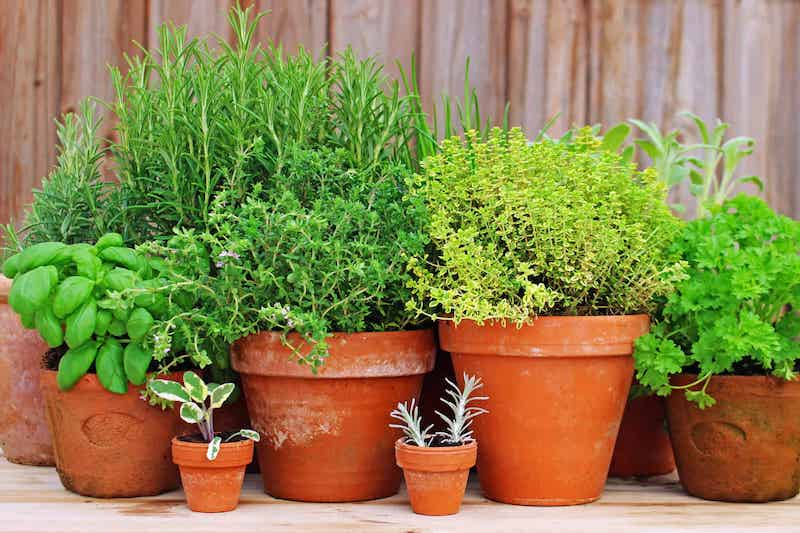How to grow veggies and herbs at home?
Growing your food has become increasingly popular in recent years. Herbs are an excellent method to get started if you're interested in gardening but are unsure about your abilities. You can buy a little pot at the nursery, plant it, and immediately harvest. If that isn't enough to persuade you, herbs also have the advantage of growing in any place and they also thrive in hot weather. You have to consider having a propose-built garden or an indoor/balcony garden to grow your herbs and veggies.

Growing a garden for sustainability is one of the easy ways to upgrade your home. You are increasing the value of your property every time to think of a valuable addition to your living space. You can ask for free gardener quotes to know the cost of work required to grow your food in your living space. This can also help you adopt a healthier lifestyle. You might want to ask how much it costs to hire a gardener to help you and other necessary preparations before you can put up your food garden. Here are some necessary steps you have to make to start your food garden.
Steps in Starting Your Food Garden
Pick The Right Location
It is important to think of a location where your vegetables and herbs can grow to the fullest to secure your garden.
-
Choose a sunny spot
Most veggies require 6 to 8 hours of direct sunlight per day to thrive. A few vegetables (mostly the leafy ones) will endure some shade.
-
Choose a spot that drains well and does not retain moisture
Plant vegetables in a raised bed or elevated row for increased drainage if your soil is poorly drained and water pools. Moist soil leads to wet roots, which can rot if your soil is rocky. Till it and remove the boulders since they will obstruct root growth and weaken your plants.
-
Choose a spot that is stable and wind-free
Avoid locations where strong gusts could knock over your young plants or prevent pollinators from doing their job. You also don't want to plant in an area that gets a lot of foot traffic or floods frequently. Plant in a spot that makes Goldilocks happy—a spot that's "just right."
-
Choose a spot with healthy soil
Choose nutrient-dense soil. The soil feeds your plants. You will have weak, unhealthy plants. To help your plants grow, provide plenty of organic stuff.

Start with small plot size
Most veggies require 6 to 8 hours of direct sunlight per day to thrive. Beginners frequently make the mistake of planting far too much too soon—far more than anyone could ever eat or want! Design your garden carefully if you don’t know how to take care of medium-sized vegetables such as zucchinis, pumpkins etc. Start with herbs and then work our way up.
Choose the right herbs and vegetables
It is very important to choose the right plants for your food garden. Certain kinds of food plants grow only in certain places and weather. You must know what plant best fits in the garden area you have. If you are a beginner, you might want to start with vegetables and herbs that are productive or fast, and easy to grow. In this way, you can be sure that you can facilitate the growth of your garden.
If you are planting to sustain your home, choose herbs and vegetables your family likes to eat, so your harvest will not go to waste. If you have extras that you can't consume, you can also share them with your neighbours, friends and coworkers.
Start Planting!
Start your garden plan and begin with planting your crops. If you have limited knowledge of planting, you might want to begin with your garden log and develop a gardening maintenance and watering routine. Other garden works are needed to facilitate your food garden's growth. That is why it is important to make it a habit to check your garden and monitor your plants. Ensure that you do not miss out on watering and supplying nutrients to your growing food garden. Avoid using chemicals. It is better to rely on natural pesticides or repellents to protect your garden from plant parasites. Naturally grown vegetables and herbs are the best for health.
Proper storage
There are instances that your vegetables and herbs will not be fully consumed. If that happens, you can dry them to prolong their shelf life. Drying plants and herbs is a great way to get rid of food garden waste. Suppose that your plants and vegetables are no longer in good condition to be consumed. You can use them as compost in your food garden. Now for the preservation of excess food plants.
You can dry your vegetables and herbs either by hanging them in bunches upside down to air dry or using a low-temperature oven. Keep them in a cool, dry location. Another way to preserve your vegetables and herbs is to freeze them and place them in snap-lock bags once frozen (this keeps the leaves separated). Finally, you can covert your vegetables and herbs or turn them into something nice with a longer shelf life.
Get free quotes in minutes.
Get quotes from our qualified and licensed tradies Australia wide.
